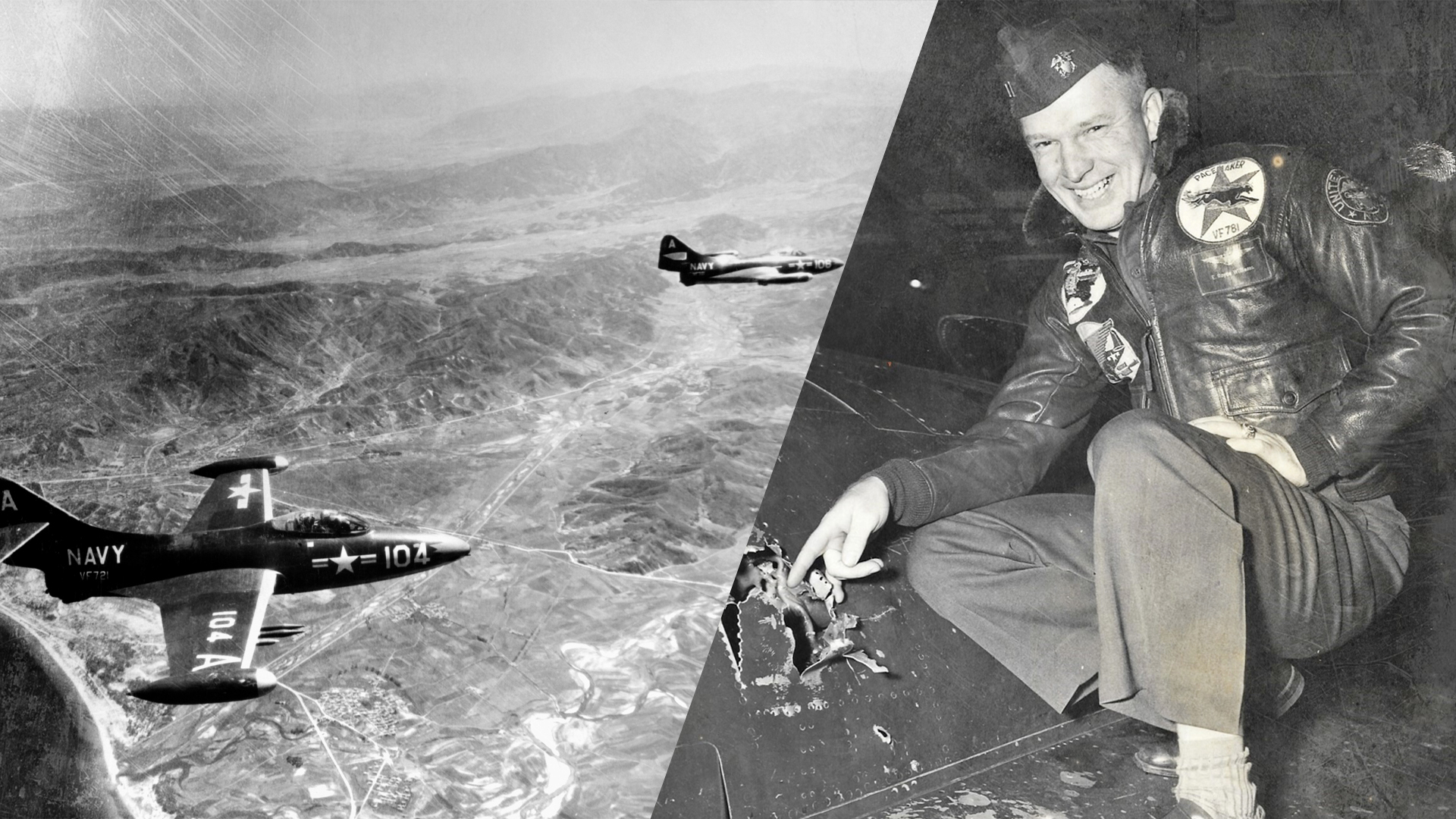

More than 70 years ago, Navy Capt. Royce Williams flew in one of the greatest dogfights of all time, taking on seven Soviet jets alone in an engagement that remained classified for decades.
This Friday, Williams will receive the Navy Cross — the service’s second-highest award for valor — for his heroic actions.
“The heroism and valor he demonstrated for 35 harrowing minutes 70 years ago in the skies over the North Pacific and the coast of North Korea saved the lives of his fellow pilots, shipmates, and crew.” said Rep. Darrell Issa (R-Cal.), who has previously advocated to have Williams receive the Medal of Honor for his action, in a statement on Jan. 13. “His story is one for the ages, but is now being fully told.”
On Nov. 18, 1952, Williams – flying his second mission of the day – took off from the USS Oriskany in a Grumman F95-5 Panther as part of a combat air patrol mission over the Sea of Japan, near the border with North Korea, China, and the Soviet Union.
“We started to rendezvous with each other as we climbed out of the clouds,” Williams told Task & Purpose last year, “And that’s when we heard from the combat information center that there were inbound bogeys from the north.”
Subscribe to Task & Purpose Today. Get the latest military news, entertainment, and gear in your inbox daily.
Thousands of feet above Williams were the contrails of seven MiG-15s, one of the most advanced fighter jets in the sky at the time and one that outclassed Williams’ Panther in speed, maneuverability, climb rate, and the weapons range. After the other three Panthers in Williams’ formation flew away – reporting mechanical malfunctions with their planes or otherwise disengaging with the enemy after – he was left flying alone against Soviet jets.
“In the moment, I was a fighter pilot doing my job,” Williams told Task & Purpose. “I was only shooting what I had.”
Climbing towards the Soviet jets, Williams fired at the last aircraft in the formation. He quickly found himself on the tail of a second jet and opened fire, bringing it down. With five Soviet jets remaining, Williams was now on the defensive, avoiding the diving attacks of the enemy jets and looking for chances where he could engage, all while keeping an eye on his fuel and ammunition levels. In more than 30 minutes of aerial combat, Williams shot down at least four MiGs, even though his own aircraft would eventually land with 263 holes in it. Nursing his plane back to the Navy task force, Williams considered bailing out, but told Task & Purpose, “I knew in that weather I wouldn’t have survived in the time it took to find me.”
When he was debriefed, he was quickly made aware of the real implications of what he had just done. With the Cold War in full swing, he had shot down actual Soviet jets — and, unbeknownst to him during the flight, he had been directed towards them based on a classified intelligence collection program from the National Security Agency. The commander of Naval Forces Far East told him to never discuss the engagement with anyone, ever, and Williams was credited with a single confirmed kill while the rest were distributed among the other pilots who had avoided the engagement.
While Williams proceeded along with his career — another 23 years that included 110 missions flown over Vietnam — the incident became a bit of Navy legend. With the collapse of the Soviet Union in 1991, records began to emerge confirming Williams’ accomplishment.
Since then, an effort has been made to recognize Williams’ feat and award him the Medal of Honor. The Navy Cross is awarded for “extraordinary heroism or distinguished service in the line of his profession, such heroism or service not being sufficient to justify the award of a medal of honor or a distinguished service medal.”
Williams will receive the Navy Cross in an award ceremony on Jan. 20 in San Diego, California.
The latest on Task & Purpose
- ‘I’m gonna miss you’ – Airman says goodbye to 65-year-old tanker he spent 12 years fixing
- Watch 24 C-17s roll out from an Air Force base in a matter of minutes
- Here comes the Navy’s laser fleet
- The tragic downward spiral of a special operations pilot
- Air Force Academy cadet dies unexpectedly while headed to class
Want to write for Task & Purpose? Click here.